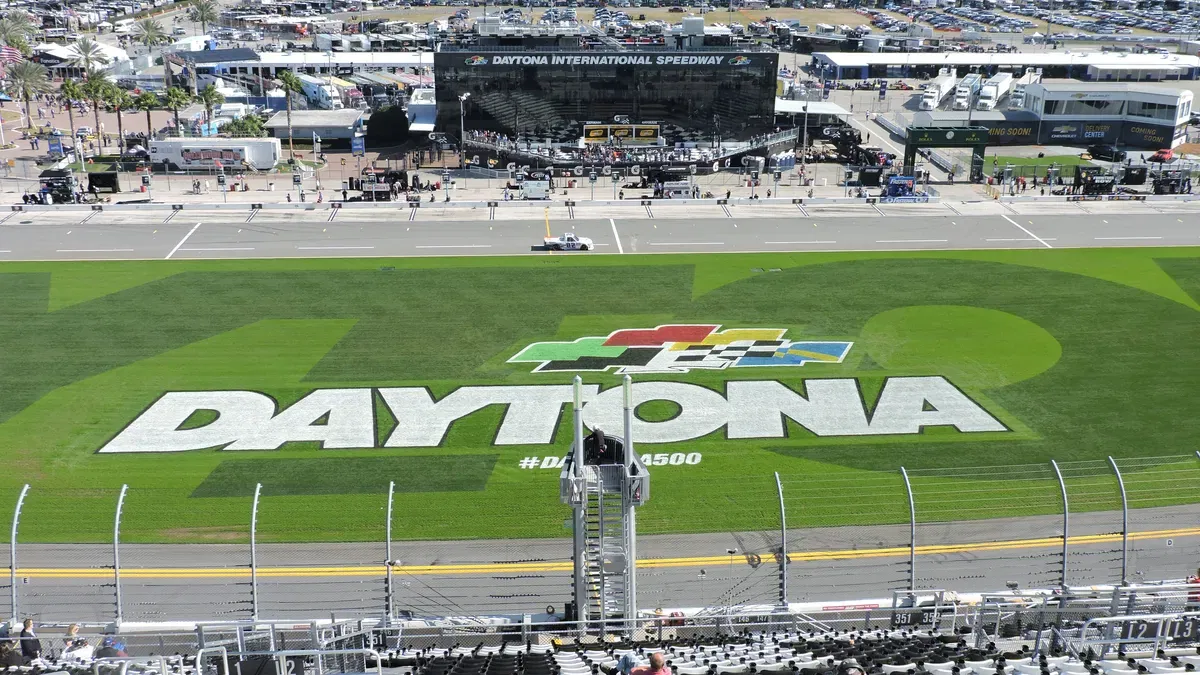
Imago
Credit: Emme Hall/CNET

Imago
Credit: Emme Hall/CNET
As engines rev and flags wave at Daytona Beach, anticipation rises for NASCAR’s iconic Coke Zero Sugar 400 weekend, a time when motorsport meets the vibrancy of summer on Florida’s Atlantic coast. Yet, beneath the sound of roaring stock cars, a quieter drama unfolds on the sun-washed beaches just beyond the grandstands. Locals and longtime racing fans recall previous years when weather delays sent thousands flocking to the waves, eager for a break in the adrenaline. But 2025 feels different.
Watch What’s Trending Now!
For weeks, lifeguards have issued warnings as powerful rip currents driven by Hurricane Erin’s lingering effect in the Atlantic threaten even the most confident swimmers. A growing concern rivals the spectacle of racecars and rivalries this year: safety in and around Daytona’s dangerous surf.
ADVERTISEMENT
High surf, rip currents, and safety measures take center stage
As fans make their way to Daytona Beach, authorities, meteorologists, and local beach officials are sounding a clear alarm: this weekend’s primary concern is not just on the racetrack, but at the water’s edge. On August 17, a prominent weather reporter alerted via social media, “Very high surf & dangerous rip currents will be the primary concern for the Southeast Coast. Any early visitors to @DAYTONA for the @NASCAR #COKE400 weekend need to be mindful of this at the beaches”.
Very high surf & dangerous rip currents will be the primary concern for the Southeast Coast. Any early visitors to @DAYTONA for the @NASCAR #COKE400 weekend need to be mindful of this at the beaches. #ERIN #flwx #gawx #scwx #NASCAR https://t.co/uJs7dVKRT6 pic.twitter.com/BVwtwtYXHb
— Jeff Vorick (@WSAVJeffV) August 16, 2025
This warning stems from real and recent incidents: nearly 200 swimmers were rescued from rip currents in Volusia County in the weeks leading up to race weekend, a volume that has emergency responders stretched thin. The continuing influence of Hurricane Erin in the Atlantic has caused powerful, unpredictable waves and currents along Florida’s coasts. Officials from Fox Weather and local news outlets highlight that the main coastal hazards for race fans this weekend will be dangerous surf and rip currents, raising serious safety concerns for those drawn to Daytona’s famous beaches.
ADVERTISEMENT
In response, local governments, lifeguard services, and NASCAR organizers have ramped up safety campaigns. These include expanded beach patrols, increased signage, and continuous public safety announcements to alert visitors. Hotels and rental properties near the beach are proactively advising guests to remain cautious, emphasizing the exceptional strength of these rip currents compared to typical summer waves.
Moreover, race weekend plans have been adjusted to mitigate risk. Organizers are encouraging fans to spend more time at infield events and other festival activities within the Speedway limits, reducing beach crowding during dangerous surf periods. Emergency medical teams are on heightened alert, with improved communication protocols, prepared to handle any water-related emergencies swiftly. In certain instances, local authorities may restrict access to some beach areas temporarily to ensure public safety.
ADVERTISEMENT
The overarching message from safety officials and community leaders is unambiguous: the thrill of the NASCAR weekend cannot overshadow the very real dangers posed by the ocean this year. For visitors, heeding warnings and exercising heightened caution near the water is essential to avoid incidents that could transform a festive race event into a crisis.
A dual challenge uniquely defined this year’s Daytona 500 weekend, while filled with the excitement and tradition NASCAR fans expect: the high-octane competition on the track and the equally intense natural conditions on the shoreline. The focus on rip currents underscores a broader commitment to fan safety that extends beyond the race itself, highlighting the critical importance of awareness and preparedness amid changing environmental risks.
ADVERTISEMENT
NASCAR’s new “Anti-Flip” setup debuts at Daytona
To enhance driver safety and reduce the risk of cars flipping during high-speed superspeedway races, NASCAR introduced a new “anti-flip” aerodynamic setup during the 2025 Daytona weekend. This setup includes a newly mandated air deflector positioned above the right-side window of all Cup cars, complementing an existing “shark fin” on the left side. The addition aims to increase the speed a car needs to reach before becoming airborne by 15% to 20%, thereby helping to reduce dangerous blow-over crashes that have plagued recent seasons.
Dr. Eric Jacuzzi, NASCAR’s vice president of vehicle performance innovation and aerodynamics, shared, “Our belief is that by reducing lift early in a spin, we can maintain better tire contact with the ground, which aids in slowing the car down. This is advantageous for us.” He emphasized that the device was the result of rigorous studies, wind tunnel sessions, and an urgent reaction to shortcomings exposed by recent flips. “It has proven to be extremely effective,” Jacuzzi said, reflecting on how the design evolved from a concept to mandatory track hardware in under a year.
Drivers have cautiously welcomed the change, acknowledging that such aerodynamic tweaks could influence car balance and behavior in the tightly packed racing scenarios typical of superspeedways. Daytona pole-sitter Michael McDowell said, “We got a tiny little bit of information, but even that in a wind tunnel by itself isn’t a real indicator of what it will be like in the pack… I think everybody is taking their best guesses.” William Byron, winner of the 2025 Daytona 500, echoed this, noting, “It’s going to change the air somehow around the car. Any aero change does.”
ADVERTISEMENT
While no solution can eliminate flip crashes given the close racing and high speeds, NASCAR’s proactive measures reflect the sport’s commitment to continuous safety improvements. Modifications such as the side skirt extensions and this new deflector work together to better control airflow under and around the cars, attempting to minimize the lift that leads to flips. Despite these efforts, drivers and teams remain aware that racing on superspeedways always carries inherent risks, but innovations like the “anti-flip” setup represent important steps forward for driver protection.
ADVERTISEMENT
ADVERTISEMENT
ADVERTISEMENT

